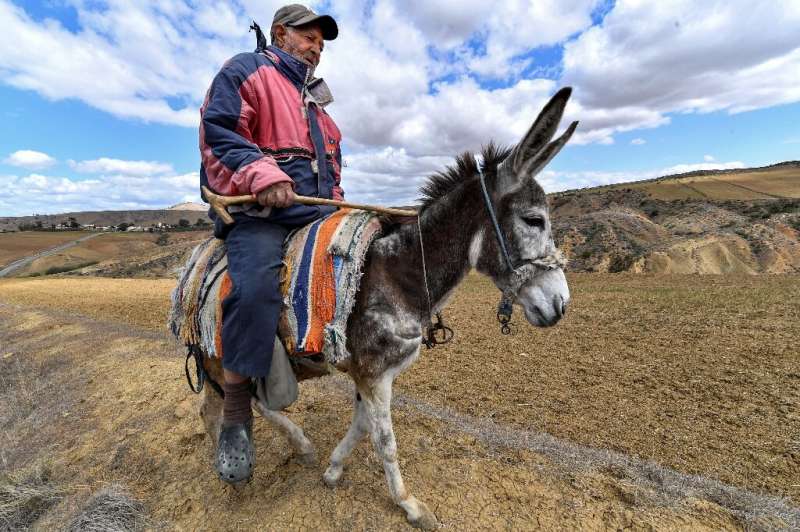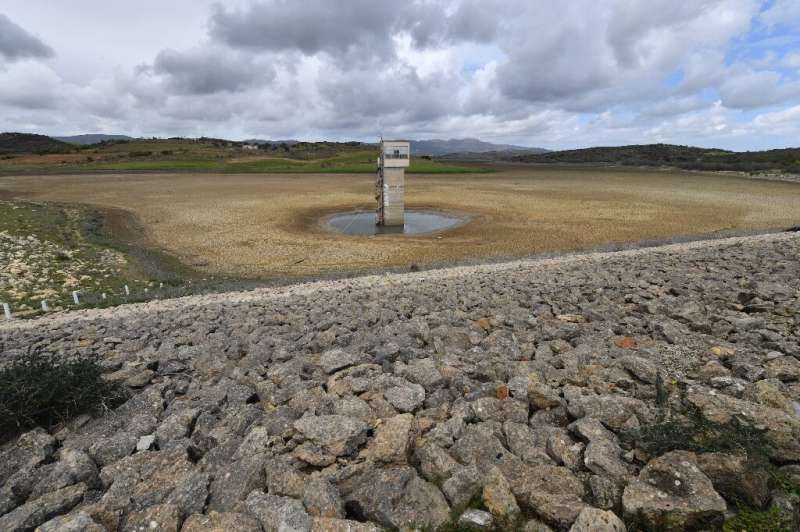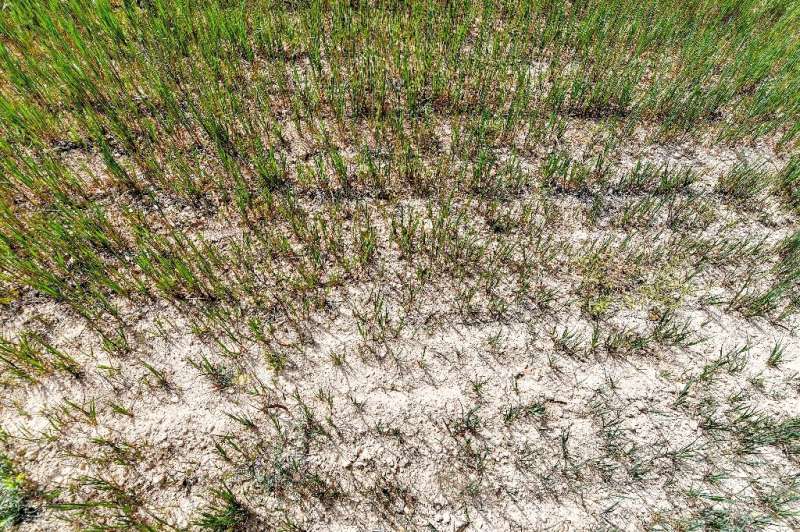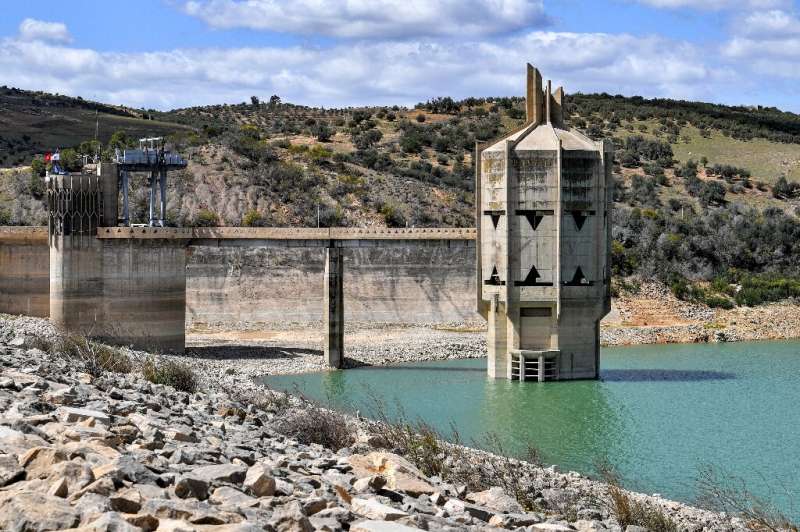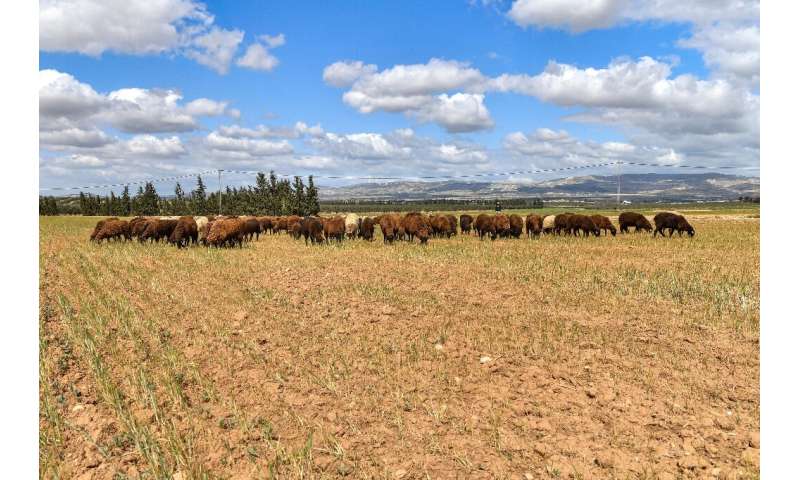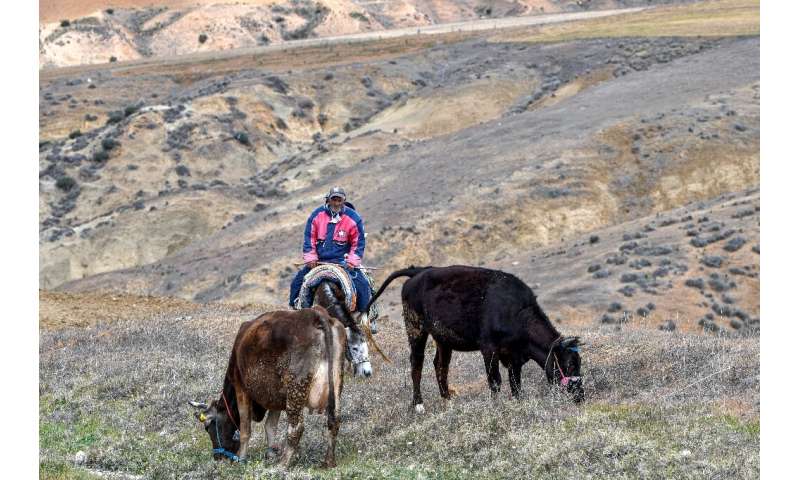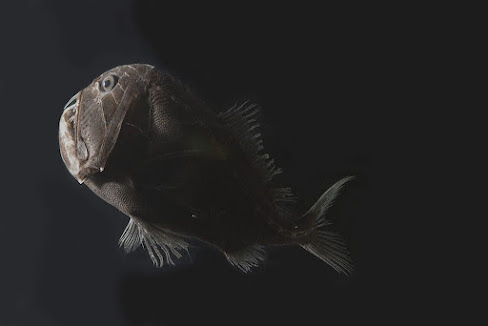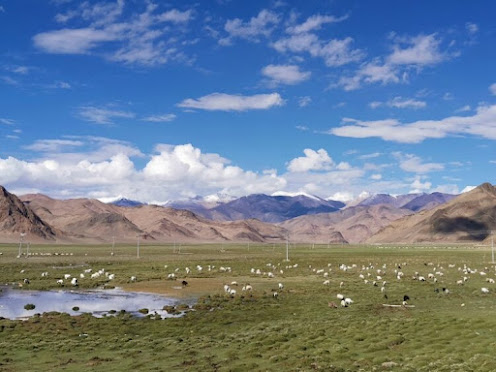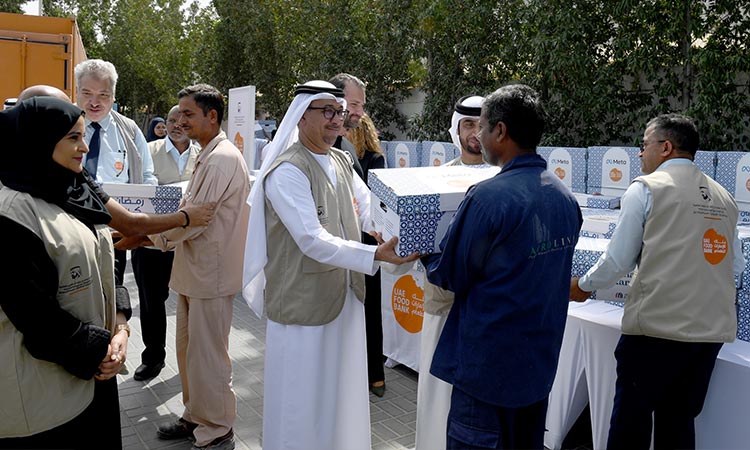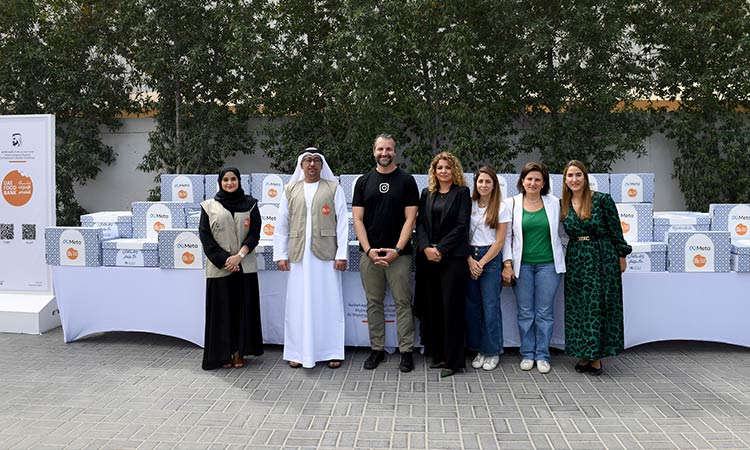April 12, 2023
No matter how much the defenders of the militaristic status quo have tried to relegate the Pentagon Papers whistleblower to the past, he has insisted on being present, writes Norman Solomon.
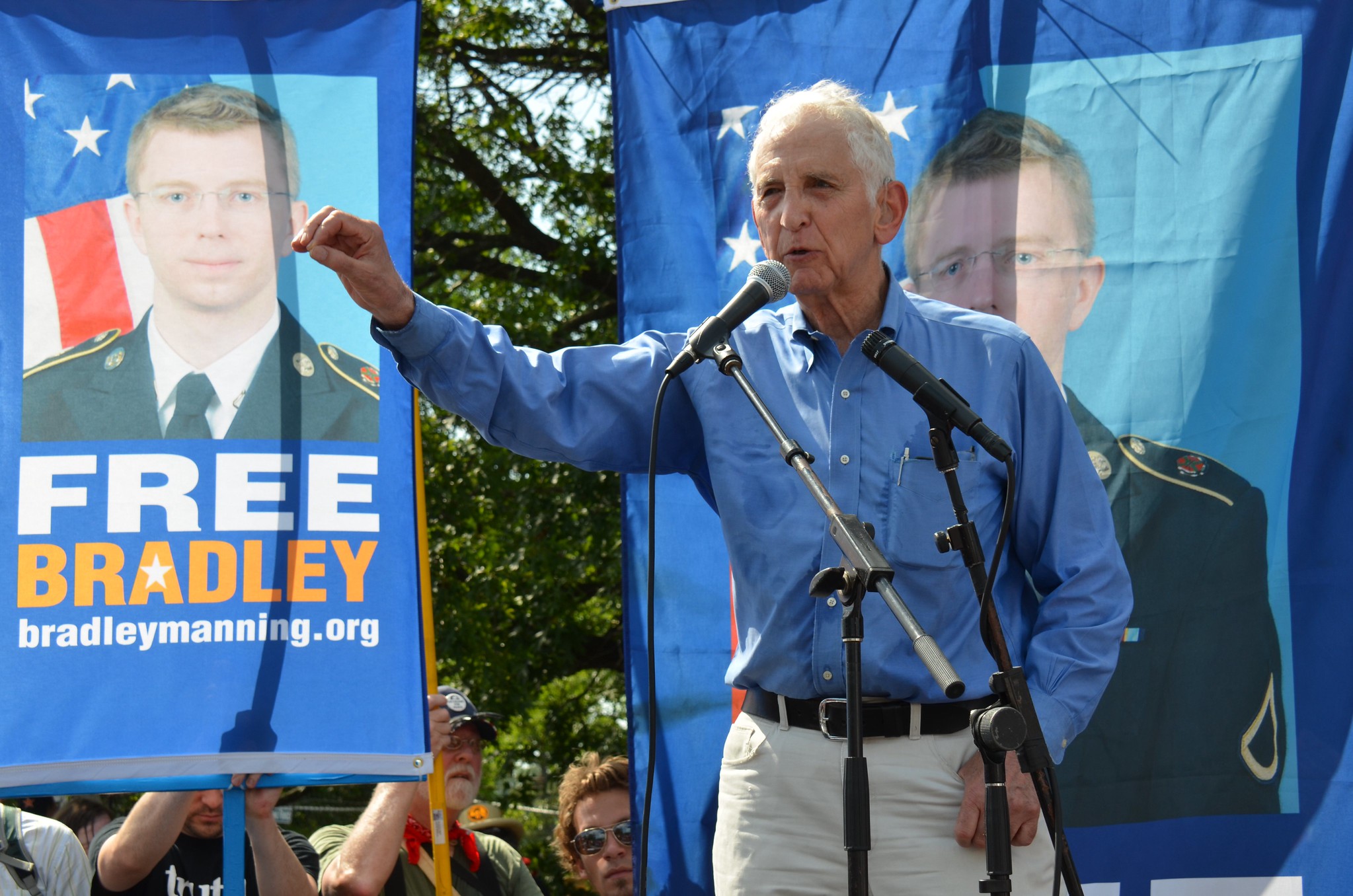
Daniel Ellsberg speaks at Free Manning protest at Fort Meade, Maryland, June 1, 2013. (Steve Rhodes/Flickr, CC BY-NC-ND 2.0)
By Norman Solomon
Common Dreams
And so, ever since the final helicopter liftoff from the U.S. Embassy’s roof in Saigon on April 30, 1975, the retrospective meaning of the Vietnam War has been a matter of intense dispute.
The dominant spin has been dismal and bipartisan. “We went to Vietnam without any desire to capture territory or to impose American will on other people,” Jimmy Carter declared soon after entering the White House in early 1977. “We went there to defend the freedom of the South Vietnamese.”
During the next decade, presidents ordered direct American military interventions on a much smaller scale, while the rationales were equally mendacious. Ronald Reagan ordered the 1983 invasion of Grenada, and George H.W. Bush ordered the 1989 invasion of Panama.
In early 1991, President Bush triumphantly proclaimed that reluctance to use U.S. military might after the Vietnam War had at last been vanquished. His exultation came after a five-week air war that enabled the Pentagon to kill upwards of 100,000 Iraqi civilians.
“It’s a proud day for America,” Bush said. “And, by God, we’ve kicked the Vietnam syndrome once and for all.”
Two decades later — delivering what the White House titled “Remarks by the President at the Commemoration Ceremony of the 50th Anniversary of the Vietnam War” — Barack Obama did not even hint that the U.S. war in Vietnam was based on deception.
Speaking in May 2012, after he had more than tripled the number of U.S. troops in Afghanistan, Obama said: “Let us resolve to never forget the costs of war, including the terrible loss of innocent civilians—not just in Vietnam, but in all wars.”
Moments later, Obama flatly claimed: “When we fight, we do so to protect ourselves because it’s necessary.”
Such lies are the opposite of what Daniel Ellsberg has been illuminating for more than five decades. He says about the Vietnam War: “It wasn’t that we were on the wrong side; we were the wrong side.”
Outlooks like that are rarely heard or read in U.S. mass media. And overall, news outlets have much preferred to make only sanitized references to Ellsberg as a historic figure.
Much less acceptable is the Daniel Ellsberg who, since the end of the Vietnam War, was arrested nearly a hundred times for engaging in nonviolent civil disobedience against nuclear weapons and other aspects of the warfare industry.

Daniel Ellsberg protesting with anti-war group Code Pink in 2006.
After working inside the U.S. war machinery, Ellsberg became its highest-ranking operative to opt out — bravely throwing sand in its gears by revealing the top-secret Pentagon Papers, at the risk of spending the rest of his life in prison. The 7,000-page study exposed lies about U.S. policies in Vietnam told by four successive presidents.
During the 52 years since then, Ellsberg has continually provided key information and cogent analysis of pretexts for U.S. wars. And he has focused on what they’ve actually meant in human terms.
Ellsberg has explained, most comprehensively in his 2017 landmark book The Doomsday Machine, what is worst of all: The nation’s military-industrial-media establishment refuses to acknowledge, let alone mitigate, the insanity of the militarism that is logically headed toward nuclear war.
Helping to prevent nuclear war has been an overriding preoccupation of Ellsberg’s adult life. In The Doomsday Machine—subtitled “Confessions of a Nuclear War Planner”—he shares exceptional insights from working for the doomsday system as an insider and then working to defuse the doomsday system as an outsider.

In 2010, U.S. Army private Chelsea Manning was arrested for leaking a vast quantity of documents that exposed countless lies and war crimes.
Three years later, a former employee of a National Security Agency contractor, Edward Snowden, went public with proof of mass surveillance by a digital Big Brother with mind-boggling reach.
By then, Ellsberg’s stature as the Pentagon Papers whistleblower had risen to near-veneration among many liberals in media and others happy to consign the virtues of such whistleblowing to the Vietnam War era.
But Ellsberg emphatically rejected the “Ellsberg good, Snowden bad” paradigm, which appealed to some eminent apologists for the status quo (such as Malcolm Gladwell, who wrote a specious New Yorker piece contrasting the two). Ellsberg has always vigorously supported Snowden, Manning and other “national security” whistleblowers at every turn.
Ellsberg disclosed in a public letter in early March that he was diagnosed with pancreatic cancer, with a prognosis of three to six months to live. Now, in the closing time of his life, he continues to speak out with urgency, in particular about the need for genuine diplomacy between the U.S. and Russia, as well as the U.S. and China, to avert nuclear war.
Many recent interviews are posted on the Ellsberg website. Ellsberg remains busy talking with journalists as well as activist groups. Last Sunday, vibrant and eloquent as ever, he spoke on a livestream videos ponsored by Progressive Democrats of America.
[On Tuesday Ellsberg was presented with the Sam Adams Award for Integrity at his home in Berkeley, California.]
Grassroots activists are organizing for the national Daniel Ellsberg Week, April 24-30, “a week of education and action,” which the Ellsberg Initiative for Peace and Democracy, based at the University of Massachusetts in Amherst, is co-sponsoring with the RootsAction Education Fund (where I’m national director).
A central theme is “to celebrate the life’s work of Daniel Ellsberg, to take action in support of whistleblowers and peacemakers, and to call on state and local governments around the country to honor the spirit of difficult truth-telling with a commemorative week.”
No matter how much the defenders of the militaristic status quo have tried to relegate Daniel Ellsberg to the past, he has insisted on being present — with a vast reservoir of knowledge, an awesome intellect, deep compassion and commitment to nonviolent resistance — challenging systems of mass murder that go by other names.
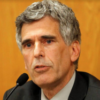
Norman Solomon is the national director of RootsAction.org and the author of many books including War Made Easy: How Presidents and Pundits Keep Spinning Us to Death. He was a Bernie Sanders delegate from California to the 2016 and 2020 Democratic National Conventions. Solomon is the founder and executive director of the Institute for Public Accuracy.
This article is from Common Dreams.
